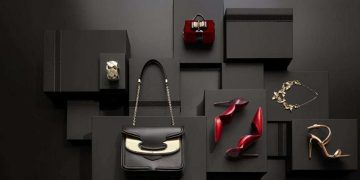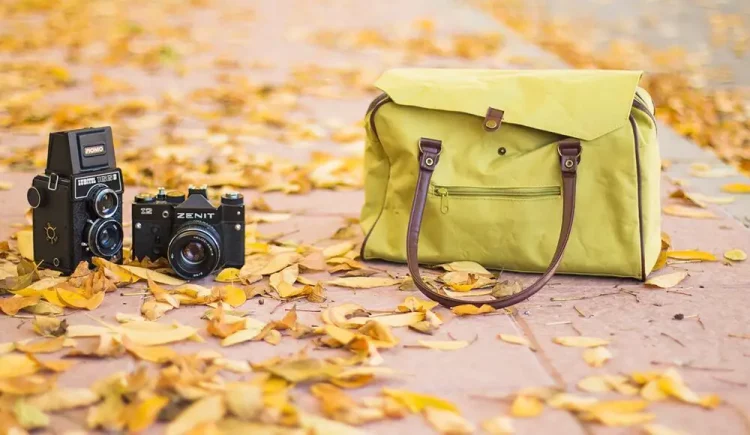Designer handbags have long been the epitome of luxury, fashion, and status. What once started as a functional accessory to carry personal belongings has evolved into a symbol of power, elegance, and individual style. From the iconic Hermès Birkin to the innovative designs of Off-White and Balenciaga, designer handbags have transcended their original purpose to become cultural icons, cherished collector’s items, and must-have accessories at high-profile fashion events. This article explores the evolution of the designer handbag, tracing its transformation from classic designs that defined past generations to the cutting-edge styles that dominate today’s luxury market. We also delve into how these handbags are more than just fashion statements; they are intertwined with the culture of luxury events, becoming essential accessories that elevate the wearer’s status at galas, auctions, and red carpet gatherings.
The Beginnings: Functionality Meets Luxury
The history of the designer handbag dates back to the early 20th century when leather bags were initially crafted for functionality rather than fashion. Early examples of luxury handbags were typically simple and practical, created to serve as a container for everyday necessities. Louis Vuitton, for example, founded in 1854, originally gained fame for creating luggage for aristocrats, with its signature monogrammed pieces becoming synonymous with luxury travel. Over time, however, designers began to realize the potential of handbags as a way to express individual style, luxury, and social status.
As women entered the workforce and began to take on more public roles in the early 20th century, handbags transitioned from purely functional to highly fashionable. Designers began to craft bags that were not only practical but also stylish—symbolizing wealth, power, and femininity. The flapper era of the 1920s, for instance, saw the rise of smaller, more decorative bags often embellished with beads, sequins, and intricate embroidery, making them an integral part of a woman’s evening attire. During this period, the handbag became an essential accessory for attending exclusive events, from cocktail parties to glamorous theater outings.
The Golden Age of Handbags: Classic Designs and Timeless Icons
The mid-20th century marked a golden age in the history of luxury handbags, with the classic designs that still hold a revered place in fashion today. The 1950s and 1960s saw the rise of some of the most iconic designer handbags that have endured through generations.
- The Hermès Birkin: Perhaps the most famous handbag in the world, the Birkin bag was created in 1984 after a chance encounter between actress Jane Birkin and Hermès CEO Jean-Louis Dumas on a flight from Paris to London. The bag, known for its impeccable craftsmanship and exclusive pricing, became synonymous with luxury and status. Over the decades, the Birkin has become a symbol of wealth, with limited editions and exotic materials like crocodile leather further elevating its exclusivity. The Birkin is not just a bag; it is a lifestyle—one that is often seen at the most elite social events, where its owners can display their wealth and impeccable taste.
- Chanel 2.55: Another icon of luxury, the Chanel 2.55 was designed by Coco Chanel in February 1955, giving it its name. The quilted leather bag with its signature gold chain strap became one of the most recognizable designs in fashion history. It epitomized effortless chic and has continued to be a favorite among fashion icons and A-list celebrities. As timeless as it is stylish, the Chanel 2.55 has always been a staple at high society events, representing a perfect balance of elegance and sophistication.
- Louis Vuitton Speedy: The Speedy bag was introduced by Louis Vuitton in the 1930s as a compact, practical, and stylish bag for travel. Its signature monogram canvas quickly became one of the most recognizable symbols of luxury. Over the years, the Speedy evolved into a versatile handbag that could be worn both day and night, at casual events or formal gatherings. Today, it remains one of Louis Vuitton’s most iconic bags, regularly seen in luxury shopping malls, high-profile galas, and at fashion events around the globe.

The Rise of Contemporary Designers: Innovation and Edginess
In the 21st century, the world of designer handbags has seen an incredible shift toward innovation, with new designers embracing more avant-garde and bold aesthetics. Handbags today have become interactive and dynamic, often blending art, culture, and technology in new and exciting ways.
- Off-White’s Industrial Bags: One of the most innovative luxury brands in recent years is Off-White, founded by Virgil Abloh. Off-White’s handbags are known for their streetwear-inspired designs, featuring bold logos, industrial straps, and an urban aesthetic. These bags have become a favorite among fashion-forward individuals and influencers, redefining the role of a designer handbag in modern fashion culture. Seen at cutting-edge events and fashion week runways, Off-White bags have merged high fashion with street style, making them highly coveted among the youthful elite.
- Balenciaga’s Motorcycle Bag: The Motorcycle bag, designed by Nicolas Ghesquière for Balenciaga in 2001, represented a radical departure from traditional luxury handbag designs. With its distressed leather, metal hardware, and rock-and-roll vibe, the bag has become an icon of edgy sophistication. Seen on the arms of celebrities and fashion influencers, the Motorcycle bag has become a statement of individuality, embracing an irreverent approach to luxury that appeals to a new generation of fashion rebels.
- Fendi’s Peekaboo and Baguette: Fendi’s iconic Peekaboo and Baguette bags have captured the attention of fashion enthusiasts for their innovative designs and playful sophistication. The Peekaboo bag, introduced in 2009, features a hidden compartment and a clean, minimalist aesthetic, while the Baguette bag, which debuted in 1997, has become an emblem of luxury cool with its bold logo and playful shape. Both bags are seen on the arms of influential figures at the most exclusive fashion events, often worn as part of a carefully curated outfit that balances both chic elegance and rebellious spirit.
Handbags as Statements at High-Society Events
Today, designer handbags are not just accessories—they are essential components of luxury culture and a fashion statement at the world’s most exclusive events. From galas to charity auctions, fashion weeks to red carpet premieres, a designer handbag is often the finishing touch to an outfit that conveys power, wealth, and status. At events like the Met Gala, the Oscars, or a private fashion show, handbags are carefully chosen to reflect not only the style of the wearer but also their place in the luxury ecosystem.
Handbags are not just meant to carry belongings—they are designed to communicate influence, to capture the public eye, and to serve as a visual representation of the wearer’s personal brand. At these high-profile events, a carefully chosen handbag can make a statement about the wearer’s taste, wealth, and cultural significance. Whether it’s a classic Birkin, a Chanel 2.55, or an edgy Off-White creation, the designer handbag has become a necessity for those who navigate the world of luxury events and wish to leave a lasting impression.
Conclusion: Handbags as Timeless Icons of Luxury
From the classic elegance of the past to the cutting-edge innovation of the present, designer handbags have evolved into timeless symbols of luxury, culture, and social status. Whether crafted in the refined ateliers of Paris or the bold studios of New York, each handbag tells a story about the wearer—about their personal taste, their ambition, and their place in the luxury world. As fashion events continue to shape our understanding of style, the designer handbag will remain an essential accessory, a statement of elegance, and a must-have item for those who live at the intersection of luxury, culture, and high society.
















































